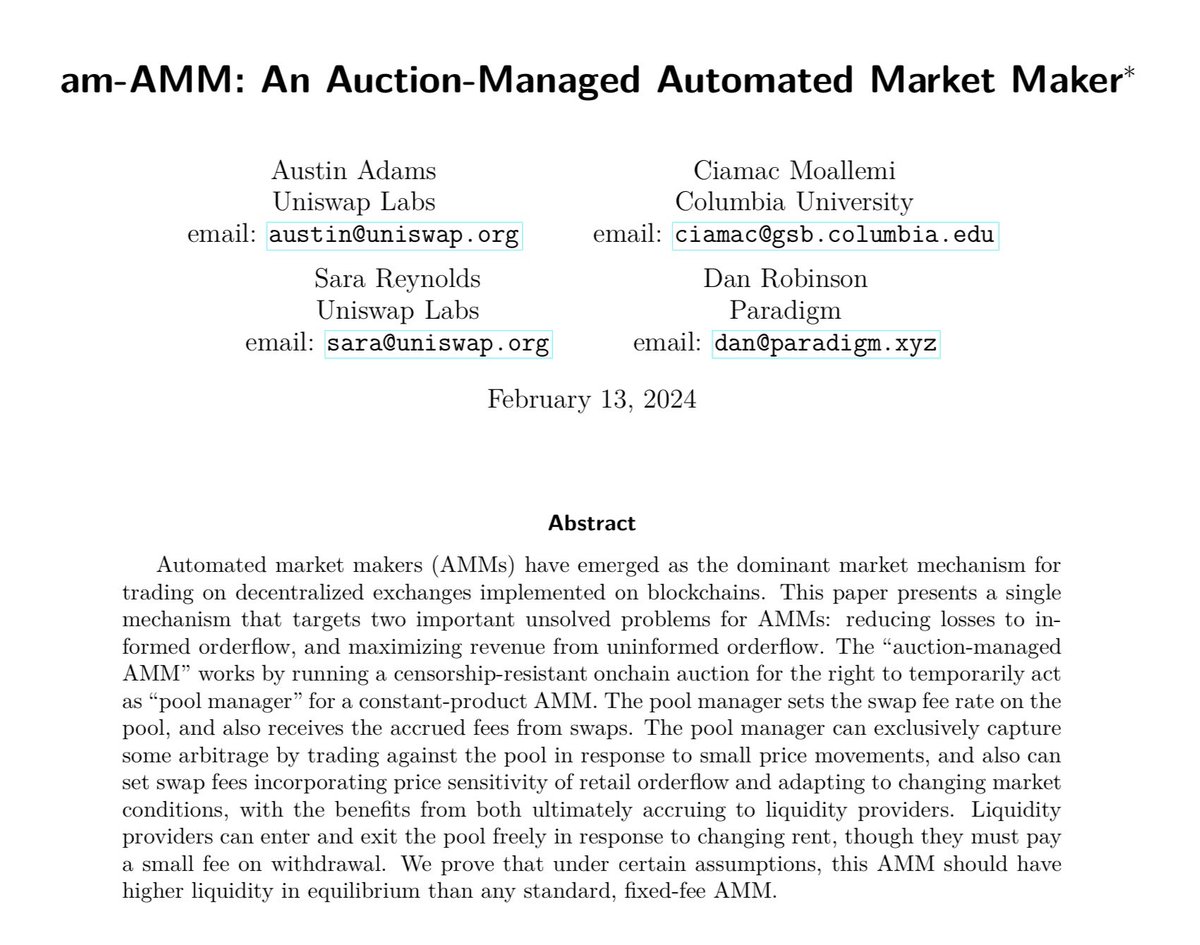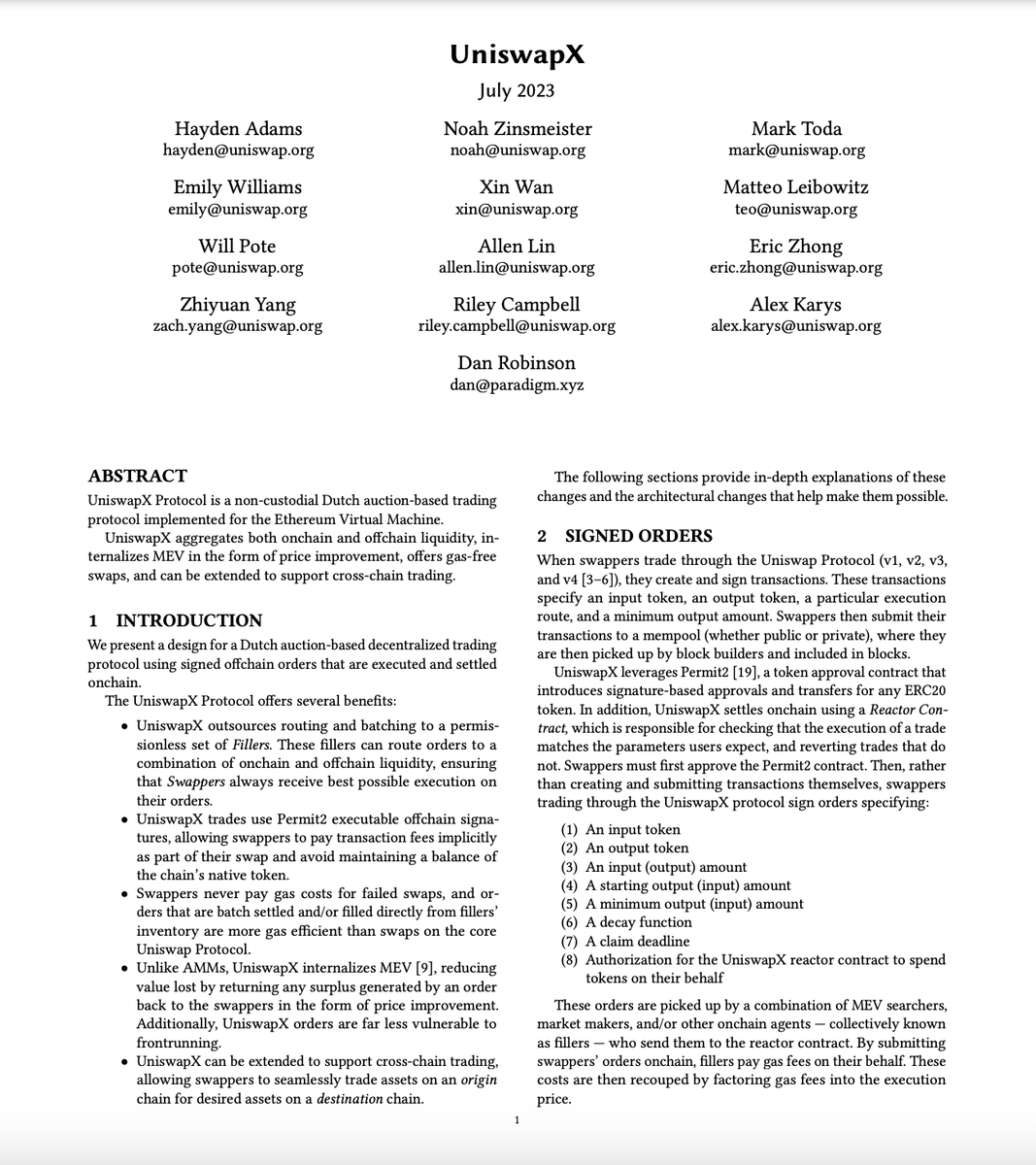New Paradigm research from me and @ciamac!
Prediction markets were the original motivation for AMMs, but today they mostly use orderbooks
One reason: outcome tokens don't behave like other assets
We present the pm-AMM, a new invariant designed for prediction markets
🧵
Prediction markets were the original motivation for AMMs, but today they mostly use orderbooks
One reason: outcome tokens don't behave like other assets
We present the pm-AMM, a new invariant designed for prediction markets
🧵

This required addressing a deep problem—what does it mean for an AMM to be optimized for a particular asset (like options or bonds)?
Many have considered this before (including me and @niemerg with YieldSpace), but we didn't have a clear reason for picking one curve over another
Many have considered this before (including me and @niemerg with YieldSpace), but we didn't have a clear reason for picking one curve over another
The missing piece came from @jason_of_cs @ciamac @Tim_Roughgarden @alz_zyd_ , in their seminal paper on LVR
They showed that for geometric-Brownian-motion assets, constant geomean pools like Uniswap or Balancer have a nice property: LVR is a constant fraction of portfolio value
They showed that for geometric-Brownian-motion assets, constant geomean pools like Uniswap or Balancer have a nice property: LVR is a constant fraction of portfolio value
We call an AMM that obeys this property for a particular asset a “uniform AMM” for that asset
Uniformity is useful because liquidity provider losses are more predictable, and liquidity is spread out more evenly
Existing AMMs are not uniform AMMs for outcome tokens!
Uniformity is useful because liquidity provider losses are more predictable, and liquidity is spread out more evenly
Existing AMMs are not uniform AMMs for outcome tokens!

We choose a model for how some outcome tokens behave, which we call “Gaussian score dynamics”
This model may be a fit for prediction markets on whether some random walk (like a basketball score, a vote margin, or a price) is above some level at a future expiration time
This model may be a fit for prediction markets on whether some random walk (like a basketball score, a vote margin, or a price) is above some level at a future expiration time
We use this model to derive a uniform AMM for outcome tokens: the static pm-AMM
When used to provide liquidity (with zero fees) between outcome tokens on a binary prediction market, the static pm-AMM has constant LVR as a fraction of portfolio value
When used to provide liquidity (with zero fees) between outcome tokens on a binary prediction market, the static pm-AMM has constant LVR as a fraction of portfolio value

While the static pm-AMM is uniform at a given time, it loses an increasing fraction of its value as expiry approaches, like other AMMs
We introduce a variant that reduces liquidity over time to have constant expected LVR over the time horizon to expiry: the dynamic pm-AMM
We introduce a variant that reduces liquidity over time to have constant expected LVR over the time horizon to expiry: the dynamic pm-AMM

We hope this framework can inspire further work on passive liquidity for onchain prediction markets
We also hope the methodology can be used to design uniform AMMs for other non-GBM assets like options, bonds, and derivatives
Read the full post here:
paradigm.xyz/2024/11/pm-amm
We also hope the methodology can be used to design uniform AMMs for other non-GBM assets like options, bonds, and derivatives
Read the full post here:
paradigm.xyz/2024/11/pm-amm
Thanks to @bqbrady, @leolovesmath, @niemerg, @notnotstorm, @Qiaoqiao2001, @_Dave__White_ , and Bill Zhang for helpful comments!
• • •
Missing some Tweet in this thread? You can try to
force a refresh












